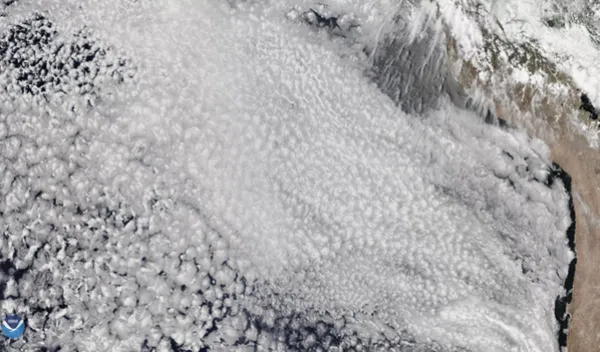
A cloudless future? The mystery at the heart of climate forecasts
We hear a lot about how climate change will change the land, sea and ice. But how will it affect clouds? "Low clouds could dry up and shrink like the ice sheets," said Michael Pritchard, an Earth system scientist at the University of California, Irvine. "Or they could thicken and become more reflective."
These two scenarios would result in very different future climates. That, Pritchard says, is part of the problem. "If you ask two different climate models what the future will be like when we add a lot more CO2, you get two very different answers. And the reason for that is the way clouds are included in climate models."
Clouds and aerosols — bits of soot and dust that nucleate cloud droplets — are an important part of the climate equation. But that these phenomena occur on a length- and time-scale that today's models can't come close to reproducing. They are therefore included in models through a variety of approximations.
Analyses of global climate models consistently show that clouds constitute the biggest source of uncertainty and instability.
The most advanced U.S. global climate models are struggling to approach four-kilometer global resolution, but Pritchard estimates that models need a resolution of at least 100 meters to capture the fine-scale turbulent eddies that form shallow cloud systems — 40 times more resolved in every direction. It could take until 2060 before the computing power is available to capture this level of detail.
Pritchard is working to fix this gap by breaking the climate modeling problem into two parts: a coarse-grained, 100 km lower-resolution planetary model and many small patches with 100- to 200-meter resolution. The two simulations run independently and then exchange data every 30 minutes to make sure that neither simulation goes off-track nor becomes unrealistic.
The team reported the results in the Journal of Advances in Modeling Earth Systems. The research is supported by the U.S. National Science Foundation. The scientists have found a way to perform high-res modeling selectively, according to Eric DeWeaver, a program director in NSF's Division of Atmospheric and Geospace Sciences.
"The model does an end-run around the hardest problem — whole planet modeling," Pritchard said. "It has thousands of micromodels that capture things like realistic shallow cloud formation that only emerge in very high resolution."
Pritchard's research is made possible by the NSF-funded Frontera supercomputer at the Texas Advanced Computing Center. On the fastest university supercomputer in the world, Pritchard can run the models at time- and length-scales accessible only on a handful of systems in the U.S. and test their potential for cloud modeling.
"The use of computation-based methods is critical to our understanding of climate and everything else around us," said Manish Parashar, director of NSF's Office of Advanced Cyberinfrastructure. "Frontera is inspiring climate scientists to devise new and novel simulation methods for enabling our deeper understanding of climate change."
